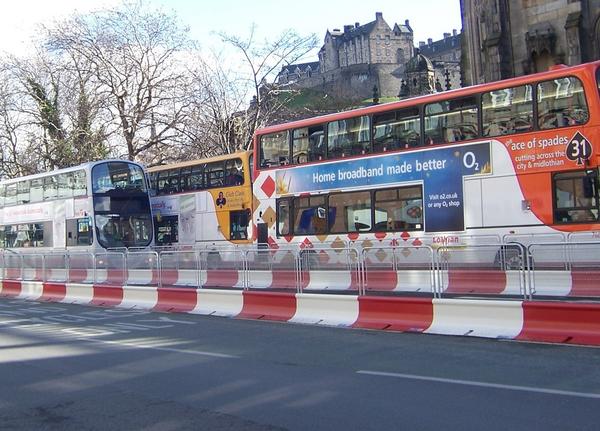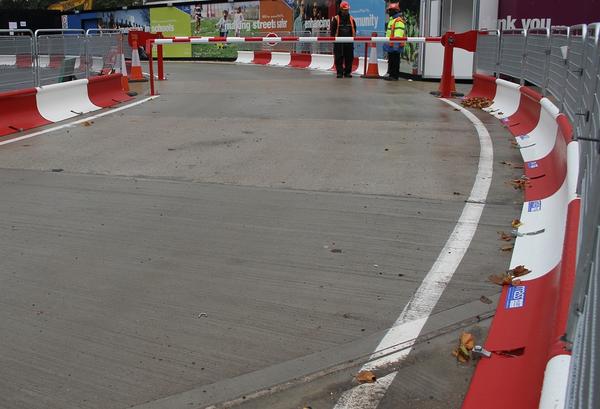Subscribe to our newsletter
Sign up for the latest news & offers from SafeSite
Quick and competitive quotes. Nationwide coverage
Quick quotes. Nationwide coverage
Deployed with safety in mind, traffic barriers serve to protect the public, workers and vehicle users on all sides of the barrier. That’s a tall order of any safety product, so how do traffic barriers work in providing protection and reducing roadside injuries and accidents when vehicles may be travelling at speed and pedestrians and site workers may be vulnerable to vehicles?

Safety science
Anyone who has been in a car accident where the vehicle made impact with another object will understand how the force with which the vehicle hits an object plays a major role in damage caused in road traffic accidents.
The extent of this force is known in the Law of Physics as F=M*A that is, the Force (F) is equal to the object’s Mass (M) multiplied by its Acceleration or speed (A). Modern cars, with fast acceleration can exert considerable force (kinetic energy) when impacting in a crash, even when travelling at relatively low speeds. The extent of the damage incurred depends on the relative force of the one object crashing into another – whatever the vehicle hits. So when it comes to prevention and protection, traffic barriers are additionally required to reduce (rather than add to) the impact in the event of a crash.
Designed to deform
Unlike the solid chassis cars of the late 20th century, the majority of modern cars incorporate a design feature known as ‘the crumple zone’. First featured by Volvo’s vehicles in the 1990s, this crumple zone is basically the section of the car which takes the impact during a crash, absorbing the force. This is facilitated by the crumple zone segments of the car framework being designed to collapse into themselves and bend, rather than hold rigid against the object which has struck them.
By replicating the ‘crumple zone’ safety ideas of cars into the design, materials and manufacturing processes of traffic barriers, the road safety effectiveness of traffic barriers greatly increases, as a crumpling (rather than rigid) resistance pro-actively supports a reduction in the energy produced when one object (car) hits another (the traffic barrier).
Of course, there are a lot of variables in every situation: the force a car exerts onto a crash barrier depends on the type of car, how heavy it is and how fast it is moving at the time of impact, so in general, a crash barrier being used for roadside protection and traffic safety purposes has to be able to withstand significant levels of force.
Reduce impulse and injury

Similarly, anyone who has ever been in a vehicle which has had to stop suddenly will understand how impulse (the change between moving at speed and suddenly becoming stationary) works. Impulse is shown in physics by the equation Impulse = F*T (Force F multiplied by Time T). In this dramatic change of momentum, the time factor is important, because the longer impulse takes, the less force is transferred between the vehicle and the object being hit. As the crumple credentials of both vehicle and traffic barriers allow the force and impulse to be slowed, damage can be significantly reduced. This decrease in impulse supports human safety and can even contribute to a reduction in crash injuries sustained by those in the vehicle.
Roadside protection on all sides of the barriers
Although commonly used to protect vehicles during road repairs and construction, traffic barriers are also essential on any area or roadway deemed to be high risk. This could be speed risk on sharp bends and motorways or vehicle risk along vulnerable roadways, such as on bridges, or areas of environmental hazards, such as mountain roads susceptible to landslips and roadways where pedestrian walkways and access points run in a close proximity to traffic.
In these areas particularly, barriers also work by not just reducing the impact and impulse but also by providing a protective obstacle to help prevent any vehicle from leaving the road and falling into further hazards, such as water, embankments, steep slopes or trees.
This safety aspect can be additionally enhanced through the specific design of some traffic barriers, such as MASS Crash-Tested Barriers. As well as being designed to reduce force and impulse and absorb impact, the roll-on, roll-off design of MASS traffic barriers offers superior barrier stability. The design specifically achieves this by diverting the energy from any impact to the base of the barrier, where it stabilizes the barrier and redirects the vehicle back onto the roadway and away from the barrier – vital on those vulnerable roadsides where an errant vehicle coming off the road could lead to additional dangers or hazards or cause further accidents.
Fit for Purpose Force
Just as the crumple zone rather than a rigid chassis has increased the safety of vehicles on impact, just so has it improved the performance and protection of roadside barriers. Although we naturally assume that something which is strong offers the best type of protection, strength from heavy-weight, rigid barriers is not the right type of roadside protection once force is a factor. Fit for purpose in this situation means a barrier which is relatively light-weight but designed to readily deform in crash conditions and keep vehicle users and roadside pedestrians and workers safer.
Traffic barriers which are designed with crumple zone technology and stability in mind include steel barriers, water-filled barriers and crash-tested MASS barriers, all of which represent a breakthrough in barrier technology and offer features which are fit for force. For more information, ask the professionals at SafeSite Facilities.
We respond in under 30 mins on average (excl. weekends)